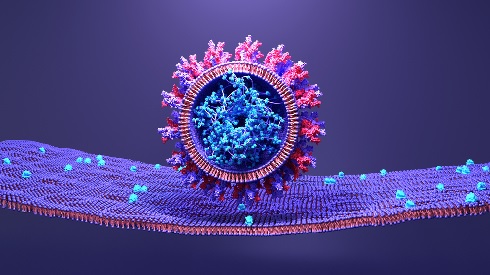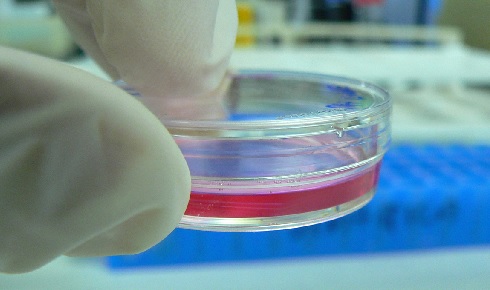Are defective stocks of SARS-CoV-2 being used in COVID studies and clinical trials?

Working stocks of SARS-CoV-2 propagated in certain cell lines are far more likely to contain mutations or deletions that affect the virus's pathogenicity. Unless care is taken to avoid these stocks, the integrity of many COVID studies around the world could be compromised, writes Dr Simon Funnell FRSB
25th August 2021
In February 2020, Public Health England and other specialist organisations mobilised staff for deployment to the headquarters of the World Health Organisation (WHO) in Geneva as it activated its blueprint for “Pathogen X”. This plan included setting up expert bodies to share data which would assist in the rapid development of vaccines, drugs and treatments against the novel disease spreading around the world.
In the initial phase of the global response to SARS-CoV-2, there was an urgent need to isolate and propagate the virus. This was required to study the virus itself and to facilitate the development of vaccines, drugs and therapeutics to protect against COVID-19.
Public Health England (PHE) was fortunate enough to have been sent the virus from the Doherty Institute in Australia, who had quickly propagated SARS-CoV-2 in a cell line known as Vero/hSLAM. These cells are used in measles research and contain a special plasmid which makes it suitable for that purpose. At the same time, PHE also had access to viral material which has been propagated in the UK using a Vero cell line which does not contain a plasmid.
After extensive and thorough genome sequencing of these different stocks, it became clear that the Vero cell-derived working stock we produced was genetically and biologically different from the virus reported to have been in the original material. This working stock had completely lost a vital virulence component of the virus called the furin cleavage site (FCS).
Our working stocks of the Australian isolate grown in Vero/hSLAM cells had not changed in this way – so we continued to use the Vero/hSLAM cell line for viral stock propagation in all of our critical biological assessments. In retrospect, this proved to be a fortuitous and helpful decision.
Within the WHO’s large group of scientists, a sub-group of virologists and other scientific experts formed to regularly discuss the viral propagation phenomenon as it was clear that variability in the genetic composition of working stocks was becoming a common issue.
After several months of experiments and sample sharing, Public Health England alongside other organisations (including The National Institute of Allergy and Infectious Diseases, National Institute for Biological Standards and Control, and the University of Wisconsin) all independently verified there is a risk that using Vero cells may result in the propagation of working stocks of virus with reduced genetic integrity[1].
 Thorough genome sequencing of different working stocks of SARS-CoV-2 has found that some contain important mutations or deletions.
Thorough genome sequencing of different working stocks of SARS-CoV-2 has found that some contain important mutations or deletions. The original primary isolates of these samples were grown in different cell lines to determine if the outgrowth of mutated virus was a reproducible property of the stock, irrespective of the cell lines used to produce it. Some of these cell lines were human in origin and these seemed to reduce the proliferation of genetically altered virus, but Vero/hSLAM cells had the most inhibitive effect.
The reasons why Vero cells (not containing a plasmid) permit the outgrowth of FCS deletions or mutations in working stocks are currently unknown, but there may be clues in the genetic make-up of the different cell lines we tested. Vero cells grow very easily, which has made them a popular tool in most virology laboratories, but the reason they grow so well is linked to the loss of some regulatory components of their genome.
Another important genetic deletion found in Vero cells is the loss of genes encoding an important anti-viral cytokine. Perhaps the presence of plasmid, which is demanding to be transcribed in the same way that an invading virus does, is creating a form of selective pressure so the viral progeny need to retain the original genetic form to remain competitive?
When SARS-CoV-2 is observed in the upper respiratory tract, the first cells infected after exposure appear to be the ciliated epithelium. These cells are highly metabolically active and hence have enormous metabolic transcription and translation processes ongoing with the arrival of the virus. It may be that Vero/hSLAM cells are a better representative of the cells that the virus prefers to invade.
Whether Vero cells produce an environment which encourages the deletion or mutation is currently unknown. While we await initiation of research projects which can unravel the secrets of this phenomenon, there is an urgent need to ensure that virus produced in Vero lines is fully and efficiently sequenced and no deletions or mutations affecting function or virulence have dominated the working stock.
Only using the cell lines which have been shown to reduce the diversity of genetic composition of working stocks can also reduce this risk. If this is not the case, the integrity and reliability of the data produced during their use may be in jeopardy.
If studies are conducted with virus stocks with less pathogenicity, the ability to detect a protective effect will be diminished and there is a potential that an effective vaccine, drug or therapeutic will fail even if the test item does confer a protective effect.
Journal reviewers and editors are urged to insist that data sets contain detail on the method of virus propagation and deep sequencing of working stocks. Only this can assure the reader that an appropriate working stock of virus has been utilised in critical preclinical and clinical evaluation studies.
Dr Simon Funnell FRSB is a Scientific Leader at Public Health England and researcher at the Quadram Institute Bioscience.


